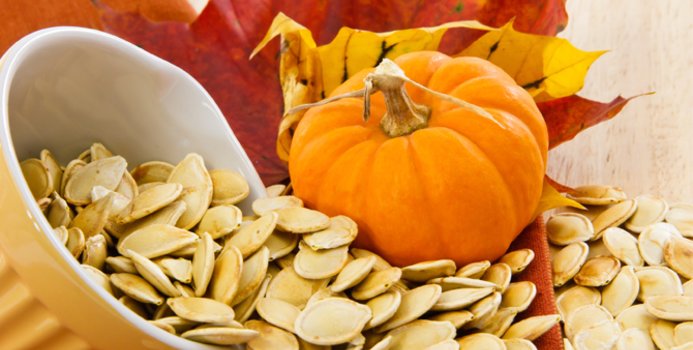
Among some of the foods that have become popular in recent years is cauliflower. A vegetable that reaches its peak between the months of November and April, and that has multiple benefits
Among some of the foods that have become popular in recent years is cauliflower. A vegetable that reaches its peak between the months of November and April, and that has multiple benefits
Some fruits and vegetables have become popular and interest in them is growing. Part of the population follows these trends to remedy some type of health problem, according to nutritionist Ana Molina.
“In principle it is positive that the consumption of fruits and vegetables is popular, but always bearing in mind that a single food will never be the cure for any disease or the nutritional panacea by itself”, clarifies the expert.
In the same way that a food alone does not have the “power” to cure a disease immediately, the nutritionist points out that to obtain its benefits they must be consumed for life.
“The best way to obtain its benefits is to consume a great variety of them and continuously, for life, and not as a fit because today I read that it is good and tomorrow I forget”.
On this occasion we are talking about cauliflower, which belongs to the cruciferous family, to which broccoli, cabbage, arugula, turnip or radish also belong.
Properties
According to Ana Molina, cauliflower is characterized by its content of vitamins B5, B6, vitamin C and K, in addition to folic acid and its potassium content. But, what function does each of these elements have in our body?
A diet low in vitamin B5 can cause fatigue, headaches, tremors and intestinal pain, “although it is found in so many foods that its deficit is rare,” says the nutritionist.
Vitamin B6 helps in the production of neurotransmitters, essential for the brain and nervous system. However, it is “more recognized” for contributing to the proper functioning of the immune system.
“In fact, vitamin B6 is the one that Actimel uses synthetically to attribute this benefit and in cauliflower we find it naturally”.
Vitamin C helps to strengthen the immune system and to promote the healing and absorption of iron, as well as being a “powerful” antioxidant.
“The problem with this vitamin is its sensitivity to heat, so more benefits are obtained in raw”, adds the nutritionist.
The main action of vitamin K is to ensure “good blood clotting and therefore that we do not bleed when we cut ourselves.”
“This is why foods rich in vitamin K are discouraged when following a prolonged treatment with anticoagulants,” she warns.
Folic acid is “popularly” known for its administration in pregnant women to prevent fetal malformations, in addition to contributing to the maintenance of the immune system.
And potassium, Molina lists, contributes to the control of blood pressure, the maintenance of muscle contraction, nerve impulses and the proper functioning of the kidneys and heart.
“Potassium is a great ally in cardiovascular diseases”.
Disease prevention
Like the rest of its cruciferous family, cauliflower is rich in glucosinolates, that is, in compounds that, according to Molina, have been classified as beneficial within the prevention of cancer.
Specifically, isothiocyanates are capable of acting as “powerful weapons” against this disease thanks to the activation of proteins that prevent the appearance of cancer cells or act against those already present.
“Its natural compounds protect against cardiovascular, neurodegenerative diseases, those related to diabetes or Helicobacter pylori”, points out Molina.
How and when to consume it
Although cauliflower can be found available throughout the year, the season in Spain takes place between November and April.
“We can also enjoy this vegetable in advance during the months of September and October, and later during the months of May and June”.
As for the way to consume this food, Ana Molina recommends steaming it so that “it does not lose its properties in the cooking water.”
“Every time we know more recipes that use it raw, especially as a substitute for rice or couscous in raw vegan diets.”
Should everyone consume it? Do not
Beyond the multiple benefits of this vegetable, Molina advises that “certain potentially negative aspects hidden in cauliflower must be taken into account.”
Its fiber content and sulfur compounds, she says, can cause difficult digestion and flatulence in some people.
“Even so, cauliflower is better digested than the rest of the cabbages so it is not contraindicated in people with digestive diseases. It will depend a lot on each individual case and, even, on what accompanies its consumption “.
As a suggestion, Molina points out the consumption of an anise or chamomile infusion, after having eaten cauliflower, to facilitate its digestion.
How and when to consume it
Although cauliflower can be found available throughout the year, the season in Spain takes place between November and April.
“We can also enjoy this vegetable in advance during the months of September and October, and later during the months of May and June”.
As for the way to consume this food, Ana Molina recommends steaming it so that “it does not lose its properties in the cooking water.”
“Every time we know more recipes that use it raw, especially as a substitute for rice or couscous in raw vegan diets.”
Should everyone consume it? Do not
Beyond the multiple benefits of this vegetable, Molina warns that “certain potentially negative aspects hidden in cauliflower must be taken into account.”
Its fiber content and sulfur compounds, she says, can cause difficult digestion and flatulence in some people.
“Even so, cauliflower is better digested than the rest of the cabbages so it is not contraindicated in people with digestive diseases. It will depend a lot on each individual case and, even, on what accompanies its consumption “.
As a suggestion, Molina indicates the consumption of an infusion of anise or chamomile, after having eaten cauliflower, to facilitate its digestion.
Another population group that should moderate their consumption, according to the nutritionist, are those who suffer from hypothyroidism.
“Crucifers have goitrogenic compounds, which have the ability to block the absorption and use of iodine, thus slowing down the activity of the thyroid gland.”
However, if the cauliflower is cooked properly, “apparently this effect disappears.”
Apply Einstein’s theory
According to the nutritionist, it would not be unreasonable to say that a piece of the cruciferous group should be eaten every day; rotating, to get its various benefits.
But, for this, Molina advises breaking with preconceived prejudices and daring to try them in different ways.









